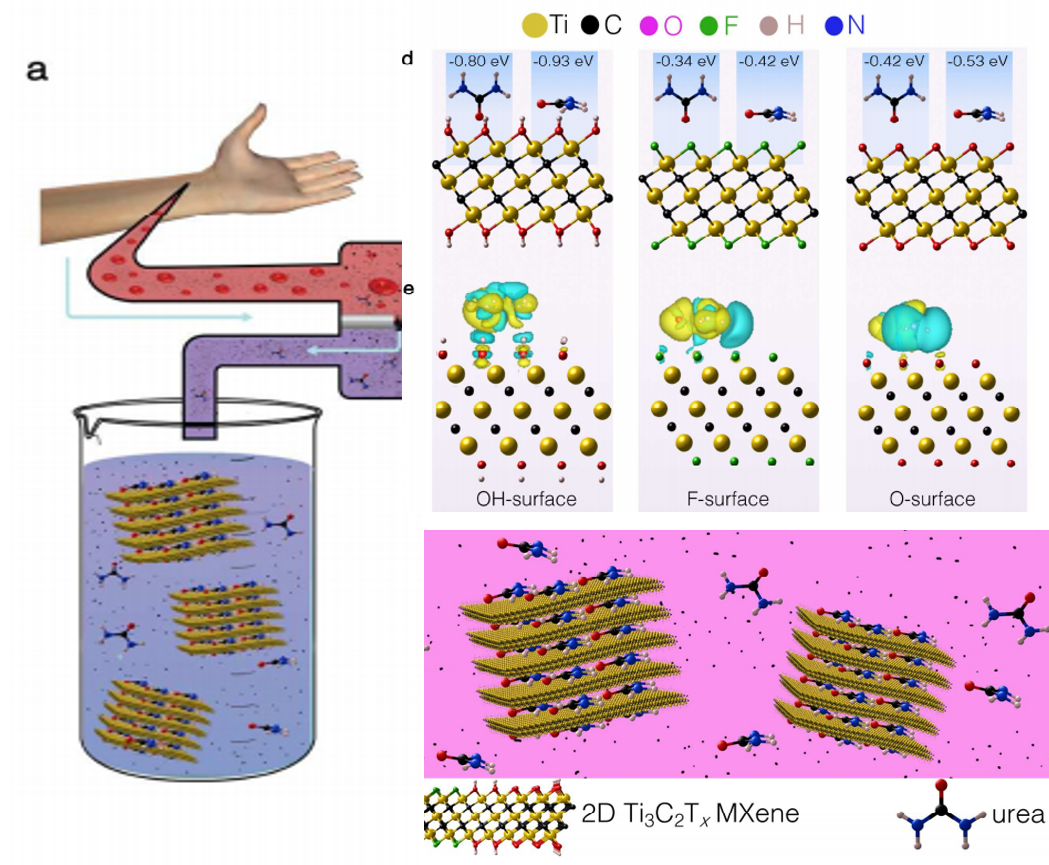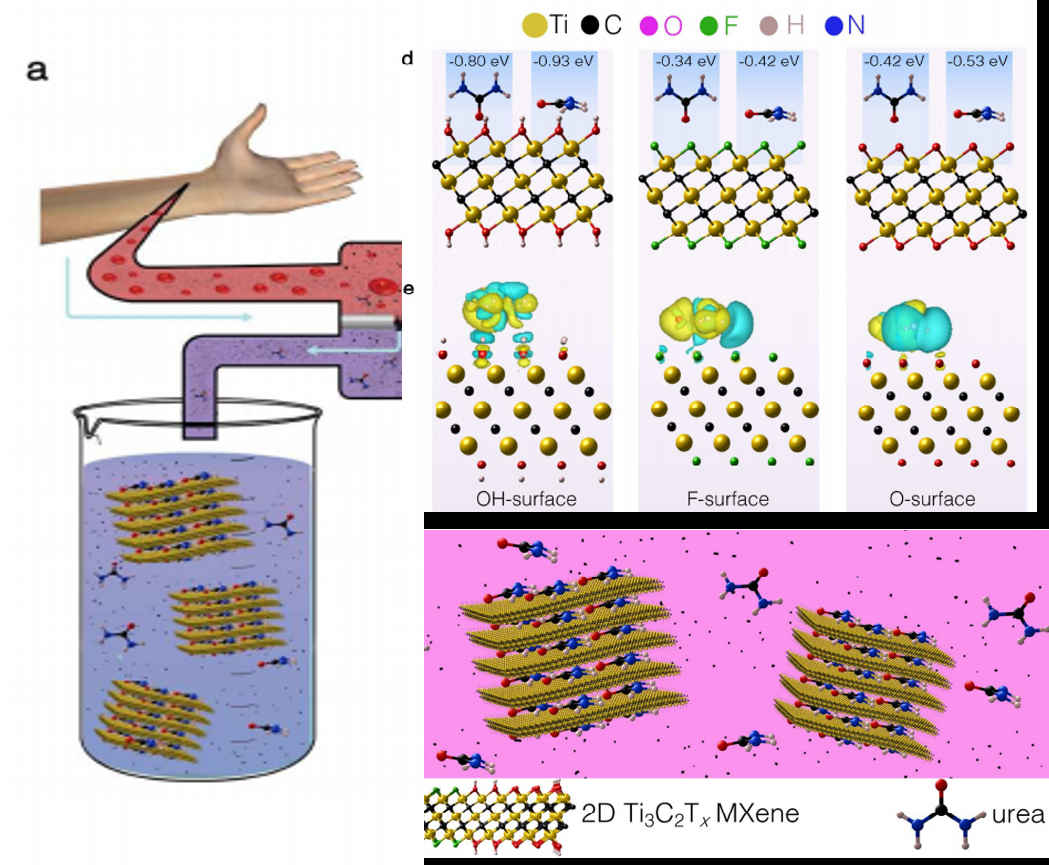MXene Sorbents for Removal of Urea from Dialysate: A Step toward the Wearable Artificial Kidney
QQ Academic Group: 1092348845
Detailed
The wearable artificial kidney can deliver continuous ambulatory dialysis for more than 3 million patients with end-stage renal disease. However, the efficient removal of urea is a key challenge in miniaturizing the device and making it light and small enough for practical use. Here, we show that two-dimensional titanium carbide (MXene) with the composition of Ti3C2Tx, where Tx represents surface termination groups such as −OH, −O–, and −F, can adsorb urea, reaching 99% removal efficiency from aqueous solution and 94% from dialysate at the initial urea concentration of 30 mg/dL, with the maximum urea adsorption capacity of 10.4 mg/g at room temperature. When tested at 37 °C, we achieved a 2-fold increase in urea removal efficiency from dialysate, with the maximum urea adsorption capacity of 21.7 mg/g. Ti3C2Tx showed good hemocompatibility; it did not induce cell apoptosis or reduce the metabolizing cell fraction, indicating no impact on cell viability at concentrations of up to 200 μg/mL. The biocompatibility of Ti3C2Tx and its selectivity for urea adsorption from dialysate open a new opportunity in designing a miniaturized dialysate regeneration system for a wearable artificial kidney.

MXene Sorbents for Removal of Urea from Dialysate: A Step toward the Wearable Artificial Kidney[J], ACS Nano,2018.
DOI: 10.1021/acsnano.8b06494
https://pubs.acs.org/doi/10.1021/acsnano.8b06494
- Previous: 2D Transition Metal Ca
- Next: Review: Research progr


 Technology frontier
Technology frontier
